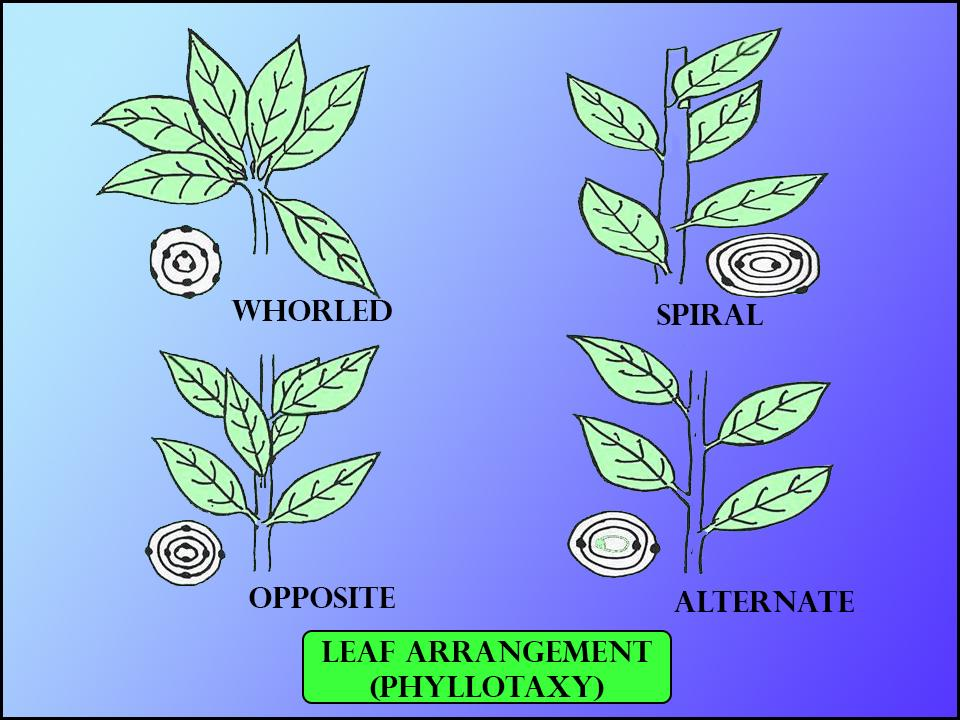
In a spiral phyllotaxy, the number of leaves at each node is
A. One
B. Two
C. Many
D. Three
Answer
489.3k+ views
Hint: The arrangement of leaves in a different rotational angle of the stem which is found to be in various patterns naturally and shows the variation in different plants.
Complete answer:
Phyllotaxy or phyllotaxy is the arrangement derived from a Greek word phyllon meaning “leaf” and taxis meaning “arrangement”. The pattern of arrangement of the leaves on the stem of the plants is phyllotaxy. Spiral phyllotaxy has a single leaf on each node.
Additional Information: -The term phyllotaxy was coined by Charles Bonnet to describe the arrangement of leaves on a plant.
-There are three basic types of phyllotaxy in plants, they are:
Opposite phyllotaxy – it is the basic arrangement of leaves on the stem. From the opposite sides of the stem from its base, two leaves arise.
Spiral phyllotaxy – in this arrangement only a single leaf arises at each node and borne along the stem alternately in an ascending spiral.
Whorled phyllotaxy – in this arrangement, several leaves may arise from the same node on a stem.
-With an alternate or spiral arrangement, each leaf arises at a different node on the stem.
-The rotational angle from the leaf in a repeating spiral can be represented by a fraction of a full rotation around the stem.
So, the correct answer is ‘One'.

Note: Leonardo da Vinci made observations of the spiral arrangements of plants first. In 1754, Charles Bonnet observed that the spiral phyllotaxy of plants was frequently expressed in both clockwise and anticlockwise golden ratio series. The mathematical observations of phyllotaxy were done by Karl Friedrich Schimper and his friend Alexander Braun in 1830.
Complete answer:
Phyllotaxy or phyllotaxy is the arrangement derived from a Greek word phyllon meaning “leaf” and taxis meaning “arrangement”. The pattern of arrangement of the leaves on the stem of the plants is phyllotaxy. Spiral phyllotaxy has a single leaf on each node.
Additional Information: -The term phyllotaxy was coined by Charles Bonnet to describe the arrangement of leaves on a plant.
-There are three basic types of phyllotaxy in plants, they are:
Opposite phyllotaxy – it is the basic arrangement of leaves on the stem. From the opposite sides of the stem from its base, two leaves arise.
Spiral phyllotaxy – in this arrangement only a single leaf arises at each node and borne along the stem alternately in an ascending spiral.
Whorled phyllotaxy – in this arrangement, several leaves may arise from the same node on a stem.
-With an alternate or spiral arrangement, each leaf arises at a different node on the stem.
-The rotational angle from the leaf in a repeating spiral can be represented by a fraction of a full rotation around the stem.
So, the correct answer is ‘One'.

Note: Leonardo da Vinci made observations of the spiral arrangements of plants first. In 1754, Charles Bonnet observed that the spiral phyllotaxy of plants was frequently expressed in both clockwise and anticlockwise golden ratio series. The mathematical observations of phyllotaxy were done by Karl Friedrich Schimper and his friend Alexander Braun in 1830.
Recently Updated Pages
The correct geometry and hybridization for XeF4 are class 11 chemistry CBSE

Water softening by Clarks process uses ACalcium bicarbonate class 11 chemistry CBSE

With reference to graphite and diamond which of the class 11 chemistry CBSE

A certain household has consumed 250 units of energy class 11 physics CBSE

The lightest metal known is A beryllium B lithium C class 11 chemistry CBSE

What is the formula mass of the iodine molecule class 11 chemistry CBSE

Trending doubts
State the laws of reflection of light

One Metric ton is equal to kg A 10000 B 1000 C 100 class 11 physics CBSE

Difference Between Prokaryotic Cells and Eukaryotic Cells

How do I convert ms to kmh Give an example class 11 physics CBSE

Describe the effects of the Second World War class 11 social science CBSE

Which of the following methods is suitable for preventing class 11 chemistry CBSE




